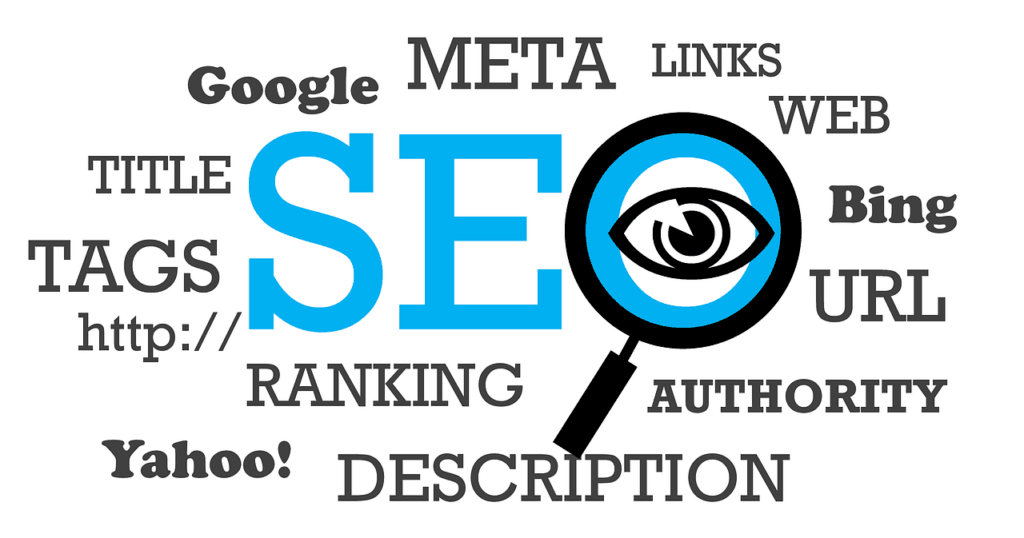This Article has been revised, edited and added to, by Poulomi Chakraborty.
- Unpacking Keyword Intent
- The Symbiosis of Keywords and Content
- Crafting Intent-Aligned Content
- Strategic Keyword Integration: Aligning Keywords with User Intent
- Contextual Relevance: Crafting Content that Speaks to User Needs
- User-Centric Optimization: Prioritizing User Experience and Engagement
- Content Depth and Authority: Establishing Thought Leadership
- Continuous Optimization: Iterating and Evolving Your Content Strategy
- Maximizing Impact Through Strategic Integration
- Decoding Informational Intent
- Mapping the User's Journey: Understanding Informational Query Patterns
- Creating Comprehensive Content Hubs: Building Authority and Trust
- Leveraging Multimedia Content Formats: Enhancing Engagement and Accessibility
- Optimizing for Featured Snippets: Capturing Prime Real Estate in Search Results
- Monitoring and Measuring Performance: Iterating Based on Insights
- Empowering Users with Valuable Insights
- Navigating Navigational Intent
- Understanding User Behavior: Analyzing Navigation Patterns and Preferences
- Streamlining Website Architecture: Optimizing for Intuitive Navigation
- Enhancing Brand Visibility: Maximizing Presence Across Digital Channels
- Leveraging Brand-Specific Features: Optimizing for Knowledge Graphs and Rich Snippets
- Monitoring Brand Mentions and Reputation: Proactively Managing Online Presence
- Guiding Users with Precision and Purpose
- Unleashing Transactional Intent
- Understanding User Purchase Behavior: Analyzing Intent Signals and Triggers
- Optimizing Product Pages: Creating Compelling Conversion Destinations
- Personalizing the Purchase Experience: Tailoring Offers and Recommendations
- Simplifying the Checkout Process: Removing Friction Points and Barriers
- Encouraging Social Proof and Trust Signals: Building Confidence in Purchase Decisions
- Transforming Intent into Action
- Mastering Commercial Investigation Intent
- Analyzing User Journey Touchpoints: Mapping the Path to Purchase
- Curating Comprehensive Comparison Resources: Empowering Informed Decision-Making
- Leveraging Social Proof and Testimonials: Building Trust and Credibility
- Implementing Retargeting and Remarketing Strategies: Staying Top-of-Mind
- Providing Exceptional Customer Support and Assistance: Guiding Users Towards Conversion
- Empowering Users with Informed Choices
- The SEO Dance with Keyword Intent
- Understanding the Dynamic Landscape of User Search Intent
- Crafting Intent-Driven Content: The Foundation of SEO Success
- Optimizing On-Page Elements for Intent Alignment
- Embracing Semantic SEO: Contextualizing Content for Intent Relevance
- Leveraging User Engagement Signals for Intent Validation
- Orchestrating Success Through Intent-Driven SEO
- Closing Thoughts
In the crowded digital space, visibility is currency. Every startup strives to rise above the noise, to be seen, and to be found. While keywords play a pivotal role in this quest, it’s not just about which keywords are targeted but understanding the underlying intentions of users typing those magical words into search engines. Welcome to the world of keyword intent, a nuanced, yet powerful facet of SEO that can transform your startup’s digital footprint.
In this extensive guide, we unravel the layers of keyword intent, offering startups a roadmap to decode, understand, and leverage user search intent to elevate SEO, enhance user engagement, and turn every search query into a doorway leading straight to your startup. It’s about moving beyond keywords as mere words to viewing them as keys unlocking the complex, diverse, and rich world of user needs, behaviors, and expectations.
Unpacking Keyword Intent

Keyword intent transcends the surface, delving deep into the motivations and expectations of users. For startups, understanding this can be a game-changer. It’s the compass that navigates the user from a search query to content that doesn’t just answer but resonates, satisfies, and engages.
Types of Keyword Intent
- Informational: Users seek knowledge, answers, or insights. They are on a quest for information, and your content can be the enlightening resource they find.
- Navigational: Here, users are looking for a specific website or page. They know where they want to go; they are just figuring out the path.
- Transactional: The user is ready to take action – purchase, subscribe, or engage. They have their credit cards in hand, metaphorically speaking, and are one convincing nudge away from converting.
- Commercial Investigation: Users are weighing options, comparing, and contemplating. They are potential customers on the brink of decision-making.
The Significance of Understanding User Intent
User intent lies at the heart of successful SEO strategies for startups. By deciphering the underlying motivations and expectations behind user search queries, startups can tailor their content and optimization efforts to better meet the needs of their target audience.
Understanding user intent is not only about ranking for specific keywords but also about providing value-added solutions that resonate with users and drive desired actions.
Beyond Surface-Level Keywords
While keywords serve as the entry point to user intent, startup founders must look beyond surface-level keywords to uncover the deeper meaning behind user search queries.
Instead of focusing solely on the words users type into search engines, analyze the context, intent, and implications behind those keywords to develop a more nuanced understanding of user intent.
By going beyond surface-level keywords, startups can identify opportunities to provide more relevant and valuable content that addresses user needs effectively.
Uncovering the Nuances of User Motivations
User intent is multifaceted, encompassing a range of motivations, desires, and expectations. Startups must explore the various nuances of user intent to develop a comprehensive understanding of their target audience’s search behavior.
By segmenting user intent into distinct categories and analyzing the underlying motivations driving each category, startups can tailor their content and optimization strategies to better align with user needs and preferences.
Informational Intent: Satisfying Curiosity and Seeking Knowledge
Informational intent reflects users’ desire to gain knowledge, seek answers, or satisfy their curiosity. Startups can capitalize on informational intent by providing informative, educational, and insightful content that addresses common questions, concerns, or interests within their niche.
By positioning themselves as authoritative sources of information, startups can attract and engage users seeking valuable insights and solutions.
Navigational Intent: Guiding Users on Their Journey
Navigational intent indicates users’ intention to navigate to a specific website or page. Startups can optimize for navigational intent by ensuring their website is easily accessible, navigable, and searchable.
Implement intuitive navigation menus, clear site architecture, and strategic internal linking to guide users seamlessly to their desired destination. By facilitating navigation and providing a user-friendly browsing experience, startups can enhance user satisfaction and retention.
Transactional Intent: Driving Conversions and Actions
Transactional intent signals users’ readiness to take action, whether it’s making a purchase, signing up for a service, or subscribing to a newsletter. Startups can leverage transactional intent by optimizing product pages, streamlining the checkout process, and implementing persuasive calls-to-action (CTAs) that encourage users to convert.
By focusing on conversion optimization and removing friction from the user journey, startups can capitalize on transactional intent and drive meaningful actions and engagements.
Commercial Investigation Intent: Guiding Users Along the Decision-Making Process
Commercial investigation intent reflects users’ inclination to research, compare, and evaluate different options before making a decision. Startups can cater to commercial investigation intent by providing comprehensive product comparisons, detailed reviews, and informative content that helps users make informed choices.
By positioning themselves as trusted advisors and providing valuable insights and recommendations, startups can influence users’ decision-making process and drive conversions effectively.
Leveraging Keyword Intent for Startup Success
Unpacking keyword intent is a strategic imperative for startups looking to enhance their visibility, engagement, and conversions in the competitive digital landscape. By understanding the nuances of user motivations, segmenting intent into distinct categories, and tailoring content and optimization strategies accordingly, startups can effectively meet the diverse needs and preferences of their target audience.
By embracing keyword intent as a guiding principle, startups can unlock new opportunities for growth, differentiation, and success in the dynamic world of digital marketing.
The Symbiosis of Keywords and Content
The power of keyword intent is magnified when coupled with content that mirrors this intent. It’s not just about ranking for a keyword but ensuring that when a user clicks, they land on content that aligns with their intent.
Crafting Intent-Aligned Content
- Answering Queries: For informational intent, focus on content that educates, informs, and answers. Think blog posts, how-to guides, and FAQs.
- Facilitating Navigation: Ensure your website’s SEO is optimized so when users are seeking you, they find you instantly.
- Driving Conversions: For transactional intent, focus on optimizing product pages, streamlining the checkout process, and compelling CTAs.
- Aiding Decisions: Create comparison guides, reviews, and detailed insights that assist users in making informed decisions.
Strategic Keyword Integration: Aligning Keywords with User Intent
Effective keyword integration starts with a deep understanding of user intent. Instead of simply incorporating keywords into content, startups should focus on aligning keywords with the specific intent behind user search queries.
Conduct thorough keyword research to identify high-intent keywords relevant to your target audience’s needs, preferences, and behaviors. By aligning keywords with user intent, startups can create content that resonates with their audience and delivers value at every stage of the customer journey.
Contextual Relevance: Crafting Content that Speaks to User Needs
Contextual relevance is key to capturing the attention and interest of users. Startups should prioritize creating content that not only incorporates target keywords but also provides comprehensive, insightful, and contextually relevant information that addresses user needs and concerns.
Tailor your content to align with the specific intent behind user search queries, whether it’s informational, navigational, transactional, or commercial investigation intent. By crafting content that speaks directly to user needs and interests, startups can establish themselves as trusted authorities in their niche and drive meaningful engagement with their audience.
User-Centric Optimization: Prioritizing User Experience and Engagement
In the era of user-centric optimization, startups must prioritize the needs and preferences of their audience above all else. When optimizing content for search engines, focus on creating a seamless and intuitive user experience that enhances engagement and satisfaction.
Pay attention to factors such as page load speed, mobile responsiveness, readability, and accessibility to ensure that users can easily access and consume your content across all devices and platforms. By prioritizing user experience and engagement, startups can improve their search engine rankings and drive more organic traffic to their website.
Content Depth and Authority: Establishing Thought Leadership
Content depth and authority are essential for establishing thought leadership and credibility in your industry. Startups should strive to create in-depth, comprehensive content that goes beyond surface-level information to provide valuable insights, analysis, and perspectives.
Incorporate relevant data, statistics, case studies, and expert opinions to support your claims and strengthen the credibility of your content. By positioning your startup as a thought leader in your niche, you can attract more organic traffic, earn backlinks from authoritative websites, and enhance your overall online visibility and reputation.
Continuous Optimization: Iterating and Evolving Your Content Strategy
Optimization is an ongoing process that requires continuous monitoring, analysis, and refinement. Startups should regularly review the performance of their content and optimization efforts, tracking key metrics such as search engine rankings, organic traffic, engagement metrics, and conversion rates. Identify areas for improvement and experimentation, and iterate your content strategy accordingly.
Test different keywords, formats, messaging, and calls-to-action to see what resonates most with your audience. By adopting a data-driven and iterative approach to optimization, startups can stay ahead of the competition and drive sustained growth and success in the ever-evolving digital landscape.
Maximizing Impact Through Strategic Integration
The symbiosis between keywords and content is a powerful force that can propel startups to new heights of success in the digital realm. By strategically integrating keywords into content that speaks directly to user needs, prioritizing user experience and engagement, establishing thought leadership through authoritative content, and continuously optimizing and evolving their content strategy, startups can unlock new opportunities for growth, visibility, and relevance.
Embrace the symbiotic relationship between keywords and content as a cornerstone of your startup‘s digital marketing strategy, and watch as it leads you towards greater success and impact in the competitive online landscape.
Decoding Informational Intent

Decoding informational intent is a pivotal aspect of understanding user search behavior and catering to the needs of your target audience effectively. In this section, we’ll delve into advanced strategies and actionable advice to help startup founders unravel the complexities of informational intent and craft compelling content that resonates with their audience.
Mapping the User’s Journey: Understanding Informational Query Patterns
To decode informational intent effectively, startups must first map out the user’s journey and identify common query patterns and behaviors. Analyze search queries related to informational intent within your niche to uncover recurring themes, topics, and questions that users are seeking answers to.
By understanding the key pain points, interests, and curiosities of your audience, startups can tailor their content strategy to address these informational needs effectively.
Creating Comprehensive Content Hubs: Building Authority and Trust
Comprehensive content hubs serve as centralized resources that provide in-depth coverage of specific topics or themes relevant to your target audience. Startups can capitalize on informational intent by creating comprehensive content hubs that serve as authoritative sources of information within their niche.
Develop long-form content pieces such as ultimate guides, whitepapers, or research reports that offer valuable insights, analysis, and actionable advice on specific topics of interest. By consolidating relevant information into comprehensive content hubs, startups can establish themselves as trusted authorities and attract more organic traffic to their website.
Leveraging Multimedia Content Formats: Enhancing Engagement and Accessibility
Multimedia content formats offer a dynamic and engaging way to present information and cater to different learning preferences and modalities. Startups can leverage multimedia content formats such as videos, podcasts, webinars, and infographics to enhance engagement and accessibility for users seeking informational content.
Experiment with different content formats to see what resonates most with your audience and aligns with their preferences and behaviors. By diversifying your content strategy with multimedia formats, startups can reach a broader audience and provide valuable information in formats that are both engaging and accessible.
Optimizing for Featured Snippets: Capturing Prime Real Estate in Search Results
Featured snippets are prime real estate in search engine results pages (SERPs) that provide users with quick answers to their queries directly within the search results. Startups can optimize their content for featured snippets by structuring it in a way that directly answers common informational queries related to their niche.
Focus on providing clear and concise answers to frequently asked questions, using structured data markup to highlight key information, and formatting your content in a way that is easily scannable and digestible for users and search engines alike. By optimizing for featured snippets, startups can increase their visibility and drive more organic traffic to their website.
Monitoring and Measuring Performance: Iterating Based on Insights
Monitoring and measuring the performance of informational content is essential for identifying opportunities for improvement and iteration. Track key metrics such as organic traffic, engagement metrics, time on page, and bounce rate to gauge the effectiveness of your content strategy.
Analyze user behavior and feedback to identify areas for optimization and refinement, such as updating outdated content, expanding coverage on popular topics, or addressing common user questions and concerns.
By continuously monitoring and measuring performance, startups can refine their content strategy to better align with the informational needs of their audience and drive sustained engagement and growth.
Empowering Users with Valuable Insights
Decoding informational intent is a strategic imperative for startups looking to provide valuable insights and information to their target audience effectively. By mapping the user’s journey, creating comprehensive content hubs, leveraging multimedia content formats, optimizing for featured snippets, and monitoring and measuring performance, startups can decode informational intent and empower users with valuable insights that drive engagement, trust, and loyalty.
Embrace informational intent as a cornerstone of your content strategy, and watch as it leads you towards greater success and impact in the competitive digital landscape.
Navigating Navigational Intent
Navigational intent signals a user’s desire to navigate directly to a specific website or page, presenting startups with an opportunity to streamline the user journey and enhance brand visibility. In this section, we’ll explore advanced strategies and actionable advice to help startup founders navigate navigational intent effectively and optimize their digital presence for maximum impact.
Understanding User Behavior: Analyzing Navigation Patterns and Preferences
To navigate navigational intent successfully, startups must first gain a deep understanding of user behavior and preferences when it comes to navigating directly to a specific website or page.
Analyze data from website analytics, search console reports, and user feedback to identify common navigation patterns, including branded searches, direct URL entries, and site-specific queries.
By understanding how users navigate to your website, startups can optimize their digital presence to meet user expectations and streamline the navigation process effectively.
Streamlining Website Architecture: Optimizing for Intuitive Navigation
An intuitive website architecture is essential for guiding users seamlessly to their desired destination and enhancing the overall user experience. Startups should prioritize optimizing their website architecture to ensure that key pages and content are easily accessible and navigable.
Implement clear navigation menus, logical site structure, and strategic internal linking to facilitate smooth navigation and help users find the information they’re looking for quickly and efficiently. By streamlining website architecture, startups can reduce friction in the user journey and improve engagement and satisfaction.
Enhancing Brand Visibility: Maximizing Presence Across Digital Channels
Strong online branding plays a crucial role in facilitating navigational intent and enhancing brand visibility in the digital landscape. Startups should focus on maximizing their presence across digital channels, including search engines, social media platforms, and online directories.
Optimize your website for branded searches by incorporating relevant keywords, meta tags, and structured data markup that reinforce your brand identity and make it easier for users to find your website.
Additionally, establish a consistent presence on social media platforms and online directories to increase brand visibility and credibility. By enhancing brand visibility across digital channels, startups can strengthen their brand presence and make it easier for users to navigate directly to their website.
Leveraging Brand-Specific Features: Optimizing for Knowledge Graphs and Rich Snippets
Brand-specific features such as knowledge graphs and rich snippets offer valuable opportunities to enhance brand visibility and credibility in search engine results pages (SERPs). Startups should optimize their digital presence to leverage these features and maximize their visibility in branded search results.
Claim and verify your business listings on Google My Business and other relevant platforms to ensure accurate and up-to-date information appears in knowledge graphs and local search results.
Additionally, optimize your website content and markup to qualify for rich snippets, such as branded FAQs, reviews, and product information, which can enhance visibility and drive more traffic to your website.
By leveraging brand-specific features, startups can increase their visibility in branded search results and make it easier for users to navigate directly to their website.
Monitoring Brand Mentions and Reputation: Proactively Managing Online Presence
Monitoring brand mentions and reputation is essential for proactively managing your startup’s online presence and addressing any potential issues or opportunities that arise.
Implement a robust brand monitoring strategy using tools such as Google Alerts, social media monitoring platforms, and online review management systems to track mentions of your brand across digital channels.
Monitor sentiment, engagement levels, and trends to gauge the overall health of your brand reputation and identify areas for improvement or intervention. By staying vigilant and proactive in monitoring brand mentions and reputation, startups can maintain a positive online presence, address any negative feedback or issues promptly, and foster trust and loyalty among their audience.
Guiding Users with Precision and Purpose
Navigating navigational intent requires startups to guide users with precision and purpose, ensuring a seamless and intuitive navigation experience that enhances brand visibility and credibility.
By understanding user behavior, streamlining website architecture, enhancing brand visibility across digital channels, leveraging brand-specific features, and monitoring brand mentions and reputation, startups can optimize their digital presence to meet user expectations and drive meaningful engagement and loyalty.
Embrace navigational intent as a strategic opportunity to strengthen your brand presence and make it easier for users to navigate directly to your website, and watch as it leads to greater success and impact in the competitive digital landscape.
Unleashing Transactional Intent

Transactional intent signifies a user’s readiness to take action, presenting startups with a valuable opportunity to drive conversions and generate revenue. In this section, we’ll explore advanced strategies and actionable advice to help startup founders unleash transactional intent effectively and optimize their digital presence for maximum conversion impact.
Understanding User Purchase Behavior: Analyzing Intent Signals and Triggers
To unleash transactional intent successfully, startups must first gain a deep understanding of user purchase behavior and the intent signals and triggers that drive conversion decisions.
Analyze data from website analytics, conversion tracking, and customer feedback to identify common purchase patterns, including product-specific queries, brand comparisons, and pricing inquiries.
By understanding the motivations and preferences of users with transactional intent, startups can tailor their conversion strategies to meet their needs and drive meaningful action.
Optimizing Product Pages: Creating Compelling Conversion Destinations
Product pages serve as critical touchpoints for users with transactional intent, offering them the information and incentives they need to make informed purchase decisions.
Startups should prioritize optimizing their product pages to create compelling conversion destinations that drive action and generate revenue. Focus on providing detailed product descriptions, high-quality images and videos, customer reviews and testimonials, and persuasive calls-to-action (CTAs) that encourage users to complete their purchase journey.
By optimizing product pages for conversion, startups can increase their chances of capturing transactional intent and turning prospects into paying customers.
Personalizing the Purchase Experience: Tailoring Offers and Recommendations
Personalization is key to unlocking the full potential of transactional intent and maximizing conversion opportunities. Startups should leverage customer data and insights to personalize the purchase experience and tailor offers and recommendations to the unique needs and preferences of individual users.
Implement dynamic pricing and promotion strategies, personalized product recommendations, and targeted messaging based on user behavior, demographics, and past purchase history. By personalizing the purchase experience, startups can enhance user satisfaction, increase engagement, and drive repeat purchases and loyalty.
Simplifying the Checkout Process: Removing Friction Points and Barriers
A seamless and frictionless checkout process is essential for maximizing conversion rates and minimizing cart abandonment. Startups should prioritize simplifying the checkout process to remove friction points and barriers that may deter users from completing their purchase.
Implement a streamlined and intuitive checkout flow with minimal form fields, guest checkout options, multiple payment methods, and transparent shipping and return policies.
Additionally, optimize for mobile devices to accommodate users who prefer to shop on-the-go. By simplifying the checkout process, startups can increase conversion rates and improve the overall user experience.
Encouraging Social Proof and Trust Signals: Building Confidence in Purchase Decisions
Social proof and trust signals play a crucial role in instilling confidence in users with transactional intent and overcoming skepticism or hesitation. Startups should leverage social proof elements such as customer reviews, ratings, testimonials, and trust badges to build credibility and trust in their brand and products.
Display social proof prominently on product pages and throughout the checkout process to reassure users and alleviate any concerns they may have. Additionally, offer guarantees and warranties to further mitigate risk and demonstrate confidence in the quality and reliability of your offerings.
By encouraging social proof and trust signals, startups can instill confidence in users and increase their likelihood of converting.
Transforming Intent into Action
Unleashing transactional intent requires startups to transform user intent into meaningful action, driving conversions and generating revenue in the process. By understanding user purchase behavior, optimizing product pages, personalizing the purchase experience, simplifying the checkout process, and encouraging social proof and trust signals, startups can unlock the full potential of transactional intent and maximize conversion opportunities.
Embrace transactional intent as a strategic opportunity to drive revenue growth and foster long-term customer relationships, and watch as it leads to greater success and impact in the competitive digital landscape.
Mastering Commercial Investigation Intent

Mastering commercial investigation intent involves understanding the nuanced behaviors of users who are actively researching and comparing products or services before making a purchasing decision. In this section, we’ll delve into advanced strategies and actionable advice to help startup founders harness the power of commercial investigation intent and guide users towards conversion with confidence and authority.
Analyzing User Journey Touchpoints: Mapping the Path to Purchase
To master commercial investigation intent, startups must first map out the user journey and identify key touchpoints where users engage in research and comparison activities.
Analyze data from website analytics, customer interactions, and market research to identify common pathways users take when evaluating products or services within your niche.
By understanding the stages of the user journey and the touchpoints where commercial investigation intent comes into play, startups can tailor their marketing and content strategies to guide users towards conversion effectively.
Curating Comprehensive Comparison Resources: Empowering Informed Decision-Making
Comprehensive comparison resources serve as invaluable assets for users with commercial investigation intent, providing them with the information and insights they need to make informed purchasing decisions.
Startups should prioritize curating detailed comparison guides, product reviews, and feature comparisons that highlight the unique value propositions of their offerings and differentiate them from competitors.
Leverage user-generated content, expert opinions, and objective analysis to provide a balanced and unbiased perspective that empowers users to evaluate their options thoroughly. By providing comprehensive comparison resources, startups can position themselves as trusted authorities and guide users towards conversion with confidence.
Leveraging Social Proof and Testimonials: Building Trust and Credibility
Social proof and testimonials play a vital role in influencing purchasing decisions and instilling confidence in users with commercial investigation intent. Startups should leverage social proof elements such as customer reviews, ratings, testimonials, and case studies to build trust and credibility in their brand and offerings.
Showcase positive experiences and success stories from satisfied customers to demonstrate the value and benefits of choosing your product or service. Additionally, encourage user-generated content and testimonials through incentives or rewards programs to further reinforce trust and authenticity.
By leveraging social proof and testimonials, startups can overcome skepticism and hesitation and guide users towards conversion with conviction.
Implementing Retargeting and Remarketing Strategies: Staying Top-of-Mind
Retargeting and remarketing strategies are essential for staying top-of-mind with users who have demonstrated commercial investigation intent but have not yet converted.
Startups should implement retargeting campaigns across digital channels to re-engage users who have visited their website or interacted with their content but have not completed a purchase.
Segment users based on their browsing behavior, interests, and stage in the purchasing journey, and deliver personalized ads and messages that address their specific needs and concerns. By staying top-of-mind with targeted retargeting efforts, startups can increase brand recall and recapture lost opportunities for conversion.
Providing Exceptional Customer Support and Assistance: Guiding Users Towards Conversion
Exceptional customer support and assistance are critical for guiding users with commercial investigation intent towards conversion and ensuring a seamless and satisfying purchasing experience.
Startups should prioritize providing responsive and knowledgeable customer support across multiple channels, including live chat, email, and social media, to address user inquiries and concerns promptly and effectively.
Offer personalized guidance and assistance to users who are in the final stages of their purchasing decision, helping them overcome any obstacles or objections they may have and facilitating a smooth transition to conversion.
By providing exceptional customer support and assistance, startups can build rapport, trust, and loyalty with users and increase their likelihood of converting.
Empowering Users with Informed Choices
Mastering commercial investigation intent is essential for startups looking to empower users with informed choices and guide them towards conversion with confidence and authority.
By analyzing user journey touchpoints, curating comprehensive comparison resources, leveraging social proof and testimonials, implementing retargeting and remarketing strategies, and providing exceptional customer support and assistance, startups can harness the power of commercial investigation intent and drive meaningful conversions.
Embrace commercial investigation intent as a strategic opportunity to differentiate your brand, build trust, and facilitate informed decision-making, and watch as it leads to greater success and impact in the competitive digital landscape.
The SEO Dance with Keyword Intent

Mastering the intricate dance between SEO and keyword intent is crucial for startup founders aiming to enhance their online visibility and drive targeted traffic to their digital assets. In this section, we’ll delve into advanced strategies and actionable advice to help startup founders elevate their SEO strategy by aligning it strategically with user search intent, ultimately leading to increased engagement, conversion, and business growth.
Understanding the Dynamic Landscape of User Search Intent
User search intent is not static; it evolves over time and varies across different stages of the customer journey. Startup founders must cultivate a deep understanding of the dynamic landscape of user search intent within their niche to adapt their SEO strategy accordingly.
Conduct thorough keyword research and analysis to uncover the diverse intents driving user queries, including informational, navigational, transactional, and commercial investigation intents.
Leverage advanced keyword research tools and analytics platforms to gain insights into trending topics, emerging search trends, and shifting user behaviors. By staying attuned to the evolving landscape of user search intent, startup founders can tailor their SEO strategy to meet the changing needs and preferences of their target audience effectively.
Crafting Intent-Driven Content: The Foundation of SEO Success
Content lies at the heart of SEO success, serving as the foundation upon which startups can build their digital presence and connect with their audience. However, merely targeting keywords is not enough; startup founders must focus on crafting intent-driven content that aligns seamlessly with user search intent.
Conduct comprehensive content audits to assess the relevance, quality, and effectiveness of existing content assets in addressing user intent. Identify gaps and opportunities for creating new content that caters to different intents and stages of the customer journey, from educational blog posts and informative articles to product guides and comparison resources.
By prioritizing intent-driven content creation, startup founders can enhance their visibility in search results and establish themselves as authoritative voices within their industry.
Optimizing On-Page Elements for Intent Alignment
On-page optimization plays a critical role in ensuring that startup websites and digital assets are aligned with user search intent and optimized for maximum visibility and engagement. Startup founders should focus on optimizing key on-page elements, including title tags, meta descriptions, headers, and content, to reflect the intent behind targeted keywords effectively.
Craft compelling and informative title tags and meta descriptions that entice users to click through to your content while accurately representing the content’s relevance and value. Structure content using clear and descriptive headers that guide users through the information hierarchy and make it easy for search engines to understand the context and intent of the content.
By optimizing on-page elements for intent alignment, startup founders can improve their chances of ranking prominently in search results and attracting qualified organic traffic.
Embracing Semantic SEO: Contextualizing Content for Intent Relevance
Semantic SEO goes beyond traditional keyword optimization, focusing on understanding the contextual relationships between words and phrases to deliver more relevant and meaningful search results.
Startup founders should embrace semantic SEO principles to contextualize their content effectively and enhance its relevance to user search intent. Utilize semantic analysis tools and natural language processing techniques to identify semantic relationships and related concepts that can enrich your content and provide additional context to search engines.
Incorporate semantic keywords and entities strategically throughout your content to signal relevance and authority to search engines while satisfying the diverse intents of users. By embracing semantic SEO, startup founders can elevate the relevance and effectiveness of their content and improve their overall SEO performance.
Leveraging User Engagement Signals for Intent Validation
User engagement signals serve as valuable indicators of content relevance and effectiveness, providing startup founders with valuable insights into how well their content aligns with user search intent.
Monitor key engagement metrics such as click-through rate (CTR), dwell time, bounce rate, and conversion rate to assess the performance of your content in addressing user intent and meeting user expectations. Analyze user behavior patterns and feedback to identify areas for improvement and optimization, from refining content messaging and formatting to enhancing website navigation and functionality.
By leveraging user engagement signals for intent validation, startup founders can continuously refine and optimize their SEO strategy to better serve the needs and preferences of their audience and drive sustainable business growth.
Orchestrating Success Through Intent-Driven SEO
Mastering the dance with keyword intent is essential for startup founders looking to orchestrate success in the competitive digital landscape. By understanding the dynamic landscape of user search intent, crafting intent-driven content, optimizing on-page elements for intent alignment, embracing semantic SEO principles, and leveraging user engagement signals for intent validation, startup founders can elevate their SEO strategy to new heights and unlock the full potential of their digital presence.
Embrace keyword intent as a guiding principle in your SEO endeavors, and watch as it leads to increased visibility, engagement, and conversion, ultimately driving sustainable growth and success for your startup.
Closing Thoughts
In this realm, content is not just king but the kingdom, where each piece, each word, each element is a building block. It’s constructed with strategic precision to ensure that when a user, driven by a specific intent, lands on your digital doorstep, they are welcomed with content that resonates, answers, and engages.
The future is not just about more keywords but about more intelligent, intent-driven strategies. It’s about startups understanding that in the crowded digital space, the key to visibility, engagement, and conversion lies in a strategy that’s attuned, aligned, and responsive to the diverse, dynamic, and rich world of user intents.
From informational to navigational, transactional, and commercial investigation intents, each is a unique dance. And for startups, the magic lies in mastering the moves, rhythms, and nuances of each dance. It’s about ensuring that every search query, every click, is met with content that’s not just seen but resonates, not just answers but engages, not just informs but transforms.
Read next



















